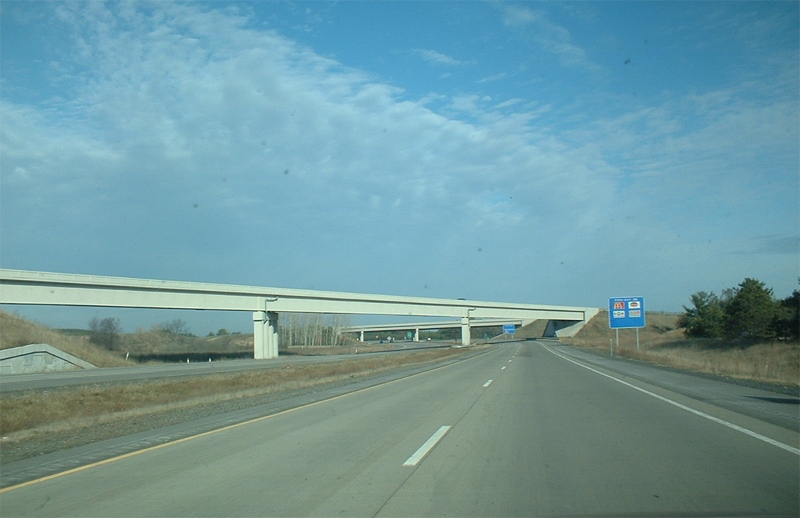Highway 29 Is State’s Economic Fault Line
Northern counties in decline. Attention must be paid, WisTax leader says.
State Highway 29 runs from Prescott on the Mississippi River to Kewaunee on Lake Michigan’s shoreline. Here’s how those who love and live along the 300-mile route describe it:
“You traverse hills along the St. Croix River Valley, brush by several UW college campuses, kiss the middle of two hemispheres at once, look up at Rib Mountain and check out Wausau, go through the heart of Green Bay, and even visit Poland before landing at Lake Michigan’s doorstep…
“It’s one of the most significant east-west roads in the state and carries the designation of the World War I Memorial Highway.”
But an important new report by the nonprofit Wisconsin Taxpayers Alliance says Highway 29 also marks a critical – and widening – economic “north-south divide” in Wisconsin.
The WisTax report, “Falling Behind?,” measured how each of the 72 counties has or hasn’t recovered since the Great Recession (2009 -2016) using five economic indicators: number of jobs gained or lost, population change, change in labor force, change in home values, and 2016 unemployment rate.
“Some parts of Wisconsin have lagged, even as the overall state economy has expanded…Nowhere is that more clear then when the state is divided north-south roughly along Highway 29.”
North of Highway 29 are 22 counties with one-third of the state’s land and nine percent of all Wisconsin residents. South of that roadway are 50 counties with two-thirds of land and more than 90 percent of the population.
What did WisTax find as the most troubling economic indicators for the Northwoods?
Fewer Jobs: The number of jobs statewide grew seven percent between 2009 and 2016. But, the number of jobs north of Highway 29 grew by only 3.4 percent — “less than half the rate in the south.”
In a WisconsinEye interview, Berry noted one key disparity in jobs numbers. The number of northern Wisconsin workers in the “leisure and hospital” industry – the tourism businesses that has anchored that region’s economy – dropped slightly, while those jobs increased by 10.7 percent in southern counties.
The biggest jobs-gained winners in the study were Calumet and Kenosha counties, with gains of 23.9 percent and 22.5 percent, respectively. Buffalo County lost the most jobs – a 28.4 percent decline – over the post-Recession years surveyed.
Fewer Workers: In 21 of the “worst-performing” counties – most of them in northern Wisconsin – “The workforce contracted; the median drop was nearly 11 percent,” the study found. “Put simply, there can no job creation if there are no workers to fill the jobs.”
Also, “The 2016 unemployment rate was significantly higher in northern counties (5.2 percent) than in southern ones (4 percent).
The statewide jobless rate in 2016 was 4.1 percent – the lowest rate in decades, as Gov. Scott Walker often reminds us.
Fewer Have Broadband Access: “In Milwaukee and Waukesha counties, nearly 100 percent of residents have access to 25 megabits per second Internet services…By contrast, in 11 counties – mostly in the north – less than half enjoy such service.”
Fewer Young Workers: “In eight northern counties – Bayfield, Burnett, Door, Florence, iron, Price Sawyer and Vilas – the ‘near-retirement’ percentage was more than 34 percent,” WisTax found. Those are residents 55 to 64 years old.
“In other words, over the next decade, more than one-third of the workforce in those counties will likely retire and need to be replaced if any workforce growth is to occur.”
While most counties north of Highway 29 will soon not have enough “replacement workers,” Berry and Knapp noted, “In 15 counties – mostly urban or suburban – replacement rates top 90%.” Those better off 15 counties include Milwaukee, Kenosha, Rock, Jefferson, Sauk, La Crosse and all Green Bay-area counties.
Berry, however, noted that economic growth in both Milwaukee and Racine counties trailed the statewide recovery. The statewide changes were jobs, +7 percent; population +1.5 percent; labor force +0.6 percent; home values -0.7% percent, and unemployment rate 4.1 percent.
In Milwaukee County, the number of jobs was up 2.7 percent; population, +0.1 percent; labor force +2.4 percent; home values -9.3 percent, and unemployment rate, 5.1 percent. Changes in Racine County were jobs +4.3 percent; population -0.1% percent; labor force +0.3 percent; home values, -7 percent, and jobless rate, 3.8 percent.
Overall, the state’s “isolated” northern counties will face critical choices, Berry warned:
“How can a school district educate students adequately and efficiently in an area with fewer than two students per square mile? Will a shrinking working population reduce property values, the primary tax base for [local governments]? A growing senior population will create increased demand for senior- and assisted-living facilities. Will these counties have the workers to staff them?”
Troubling questions. Will state policy makers respond?
Steven Walters is a senior producer for the nonprofit WisconsinEye public affairs channel. Contact him at stevenscwalters@gmail.com
The State of Politics
-
A Wisconsin Political Trivia Quiz
 Dec 15th, 2025 by Steven Walters
Dec 15th, 2025 by Steven Walters
-
The Fight Over Wisconsin’s House Districts
 Dec 8th, 2025 by Steven Walters
Dec 8th, 2025 by Steven Walters
-
The Battle Over On-Line Betting
 Nov 24th, 2025 by Steven Walters
Nov 24th, 2025 by Steven Walters






















Mr. Walters presents an interesting statistical analysis. The facts are that while many people dream of a life in the area of the state that is so idyllic you can’t even see the air you breathe, many find the quiet rural atmosphere stifling and it isn’t just because they miss broadband internet service.
I wonder what the rural residents of these counties would ask their government representatives to do for them. They have consistently sent the antigovernment proponents of the conservative right to Madison and Washington.
We build high capacity highways so the summer visitors can get up there to enjoy the beauty and quiet. The state spends a considerable amount of money promoting the tourist business. As a former sales Representative, I can attest to the success of some businesses North of 29, Tombstone in Medford comes mind.
Far too much of the business in this area is resourced based. Lumbering, mining, and Hospitality can suffer huge swings from prosperity to stagnancy.
Given this state of this part of the state, they need to develop manufacturing or service businesses that can attract people that prefer the low-pressure life of the great north woods.
Many years ago there was a tongue and cheek movement to have this part of the state join with the Upper Peninsula of Michigan and secede from their parent states and form the State of Superior. This was conceived to highlight how their respective capitals ignored them. Maybe they should take their tongue out of their cheek and get serious about it.
The Economy in northern MN, WI and MI are all the weakest areas of their respective states and they are all farthest from their respective state capitals and get overlooked most often. The state of Superior is a good idea. I read somewhere that congress in the 1800’s had planned to make Minnesota two states separated north and south when Texas was split again to keep the nation balanced. Since TX didn’t split, MN wasn’t split. If the same parallel state line was drawn as north and south Dakota to the existing upper peninsula boundary across Minnesota and Wisconsin, much of this problem would be fixed. Perhaps Duluth and Superior could be joined together into one capital city which would still be far larger than many state capitals around the country. If you drive around Duluth/Superior enough, it already feels like it should have been a state capital(together both cities would be 105 square miles with around 125,000 residents). The population and land area of this region would also be fairly comparable to other less populated states with land. The weather in that area is far different from the weather in the southern portions of each state and people have never really been on the same page about most issues. Look at the fight over mining vs conservation in all three areas for an example.
Another area that suffers the same trouble is northern Iowa north of IA highway 3 similar to WI 29. Areas north of that line suffer economically. I have no doubt Minnesota could provide better help to those areas and even now, they are more dependent on the Twin Cities region for business than from Des Moines. The boundary of IA and MN could be adjusted at IA 3(the longest highway in the state) at the same time MN and WI boundaries were adjusted. I think everyone would be better off because of the change. I’ve thought a lot about this because I’ve lived in Duluth, Minneapolis/St. Paul, Western Wisconsin, and Albert Lea/Mason City area. People would be amazed at how big of a difference could be made by simply adding one additional state to the region. We should all be open to this type of setup because it could improve the lives of people in so many areas. Regions benefit from having a nearby state capital. Those that don’t are economically depressed without enough local control.
AND all those city folks come up North to hunt, fish, eat and buy cabins so they can escape the crime, population density and traffic- – kinda ironic eh?
Then the Northerners tax the hell out of the cabins and collect welfare so it all evens out?!